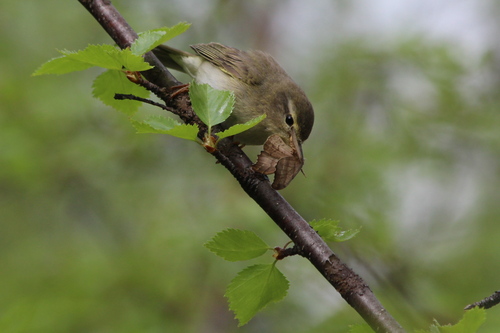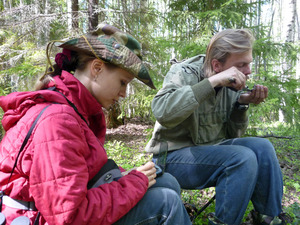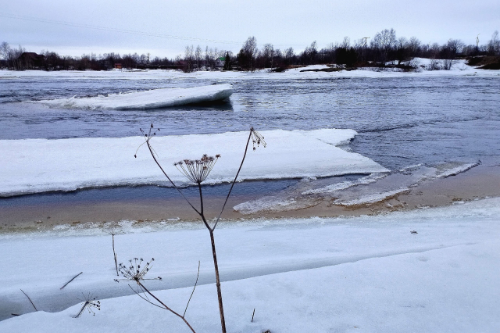Traditionally, bird territories are assessed not by the entire air space volume, but only in the form of planar 2D projections on the ground. Karelian scientists applied a new three-dimensional technique, previously tested by foreign specialists on Caribbean islands.
– It’s wrong to view birds as creatures existing in two dimensions. Until recently, however, there were no mathematical methods for full-volume analyzing of spaces. American scientists suggested a novel 3D technique, which was applied in tropical regions to analyze the volume of wintering birds’ territories. We, on the other hand, were the first to test this method in application to bird nesting in the Palearctic. The technique permits plotting virtual 2D and 3D territories, measuring them, studying territorial interactions between males and nest location characteristics, – said Maria Matantseva, Research Leader, Senior Researcher at Zoology Laboratory, Institute of Biology KarRC RAS.
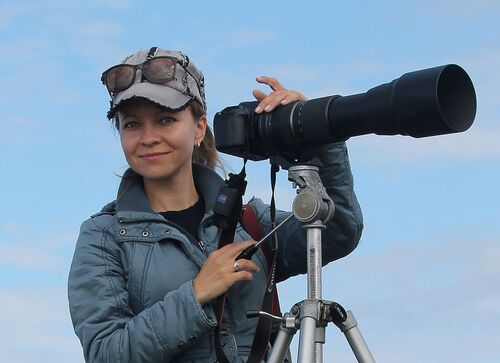
Maria Matantseva, Research Leader, Senior Researcher at Zoology Laboratory, Institute of Biology KarRC RAS.
Photo by S. Simonov / IB KarRC RAS
The activities are funded by a Russian Science Foundation grant #23-24-00092. The object chosen for the study is the Willow Warbler, Phylloscopus trochilus. This species breeds in Northern Europe and Asia, and overwinters in Africa, south of the Sahara. On the Kola Peninsula, Willow Warblers prefer small forest patches amidst the tundra. During the breeding season, males demonstrate obvious territorial behavior: they sing and defend their breeding grounds from rivals. Singing locations are clear markers for delineating the territories of each pair.
– We decided to check how much territories can really overlap and how the birds use the common parts of overlapping spaces. It was also important to compare how much the results on 3D bird territories agreed with the results of their traditional estimation as planar figures. Whether it’s expedient to use 3D techniques, which require more effort, – explained Sergey Simonov, project co-author, Senior Researcher at Zoology Laboratory, Institute of Biology KarRC RAS.
To be able to monitor and position the birds, researchers trapped and ringed them. The ringed birds were then tracked down and their positions were recorded on a map, indicating the height they occupied. For each of the 37 males 80–100 points were recorded. The scientists then visualized and delineated the birds' territories in a virtual environment as clouds of these points. Also, biological material was sampled from all the monitored males, their chicks and females. Subsequent molecular genetic analysis will help elucidate kinship within the families.
The scientists’ results were published in the international journal of Polar Biology. They proved that Willow Warblers actively used differentiation by altitudes, seeking whenever possible to divide the space of suitable habitats among individual males. Neighboring males strive to occupy territories on top of each other, like layers of roof tiles. Their ground surface projections proved to overlap, whereas the real 3D territories were totally separate or much less overlapping.
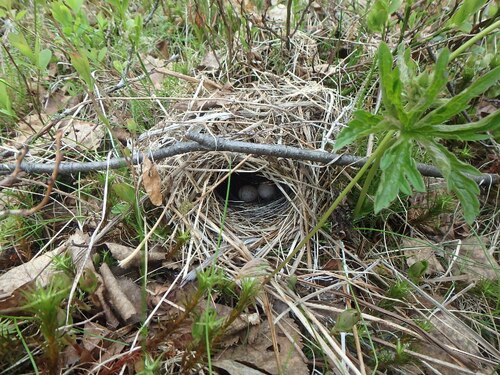
Willow Warbler’s nest. Photo by M. Matantseva / IB KarRC RAS
The ornithologists also managed to prove that even where neighboring territories really overlapped, the birds used the overlapping parts much less frequently than the non-overlapping parts. The specialists argue this is evidence that relying on 2D methods alone can lead to serious errors and false conclusions. Thus, this study of Karelian scientists is of methodological value for other researchers. It is important to know which approaches can or cannot be used in certain circumstances and what the level of error of one technique is compared to another.
The application of 3D methods to study bird territories in the Arctic will also help us better understand the mechanisms the birds employ to adapt to high latitudes and get new data on the ecology of the species.
Finally, a particularly relevant question today is whether animals will be able to adapt to small fragmented habitats. Urban and farmland areas are growing, while natural habitats are turning from continuous spaces into small scattered fragments. It's essential to know in advance which species, and under what conditions, can occupy these new kinds of habitats in order to avoid a critical decline in their populations or even total extinction.




